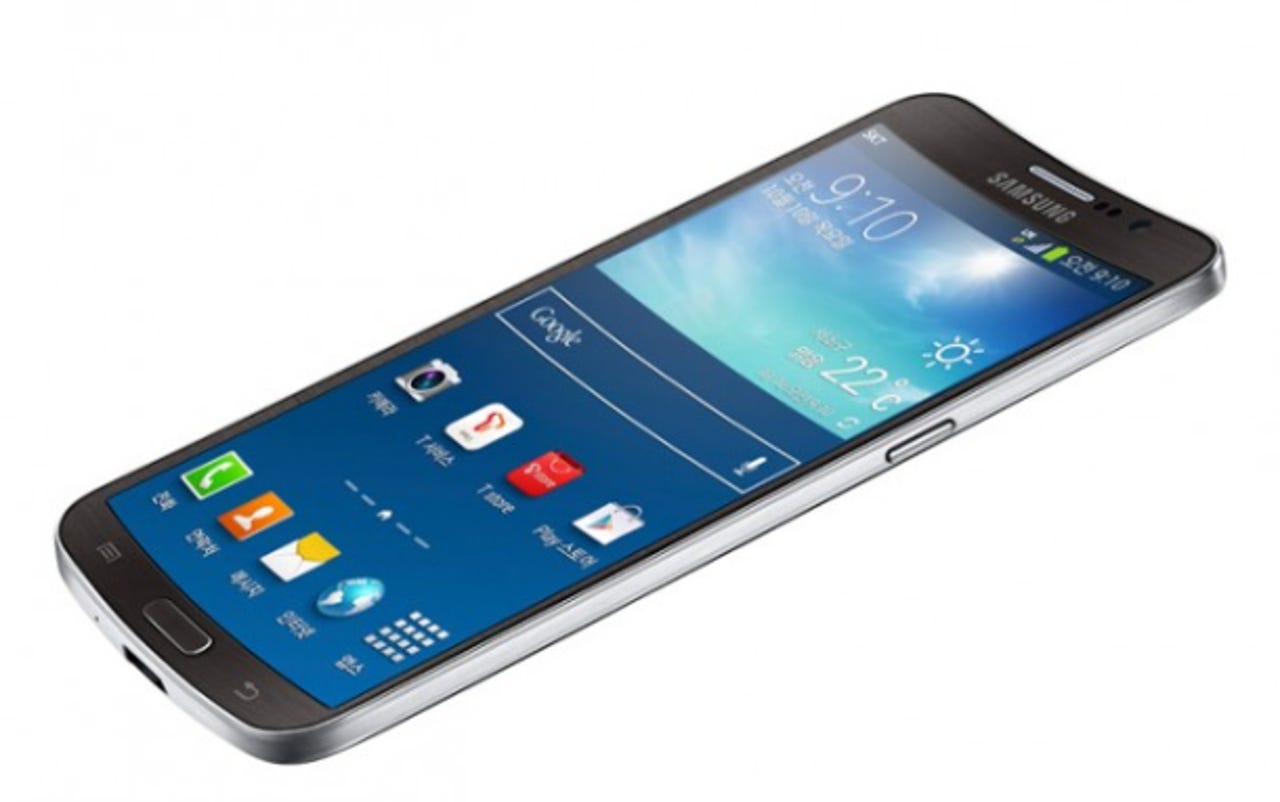Curved glass is more than a marketing gimmick


Rumors that Apple is developing iPhones with 4.7 and 5.5-inch screens aren't surprising given that Google, Samsung, LG and HTC currently offer smartphones with 5-plus-inch displays. Witness 5.7-inch display that arrived in the Galaxy Note 3 "fablet" in September.
The other, and perhaps more interesting rumor coming from Bloomberg, is that Apple is experimenting with curved glass displays on its forthcoming iPhone models.
Samsung announced its curved-screen Galaxy Round last month (check out CNET's "Get bent" and ZDNet's photo gallery) -- essentially a concave Note 3 -- and some were quick to dismiss its curved glass as a marketing gimmick. While the iPhone user in me thinks that it smacks of a money grab by Samsung, a new report by renown display expert Dr. Ray Soneira maintains that there are tangible benefits to curved glass displays in consumer gadgets.
According to Soneira, slightly curved glass magnifies the sizes of all of the objects that it reflects which substantially cuts down on the interference of light reflections from ambient light.
Introducing a slightly curved cylindrically concave screen is a very important and major innovation in Smartphone display technology - very far from being a marketing gimmick as has been widely reported. The Galaxy Round screen curvature is very subtle, just 0.10 inches away from flat, which is similar to the slight curvature in a handheld magnifying mirror. But that small curvature is the key to a series of optical effects that result in significantly reducing interference from reflected ambient light by a large factor. It substantially improves screen readability, image contrast, color accuracy, and overall picture quality, but can also increase the running time on battery because the screen brightness and display power can be lowered due to the reduced light interference from ambient light reflections.
So there you have it. This curved glass thing might have legs after all. If it increases battery life that alone might be worth the small penalty in overall device height that comes from curving an otherwise flat object.
In related news, some speculate that Apple's recent purchase of $578 worth of sapphire and its construction of a manufacturing plant in Arizona could foreshadow a switch from Gorilla Glass to sapphire on the iPhone and iPad. Others believe that it could be for the iWatch.
When I asked Soneira about Apple's sapphire plans, he noted that it would be "good for both" (the iPhone and iWatch)
"but very expensive." Adding "I believe sapphire is more scratch resistant than Gorilla Glass but don't know what its Reflectance properties are. My guess, based on the size of the investment, is that it will be for smartphones and possibly tablets. Watches alone probably wouldn't justify an investment of this size."
Matthew Hall, Director of the Center for Advanced Ceramic Technology at the Kazuo Inamori School of Engineering at Alfred University (via TechCrunch) notes:
Chemically strengthened glass can be excellent, but sapphire is better in terms of hardness, strength, and toughness. The fracture toughness of sapphire should be around 4 times greater than Gorilla Glass – about 3 MPa-m0.5 versus 0.7 MPa-m0.5, respectively.
Apple currently uses sapphire crystal for the Touch ID-enabled home button in the iPhone 5s.
So, would you purchase a curved iPhone (over a flat iPhone?)